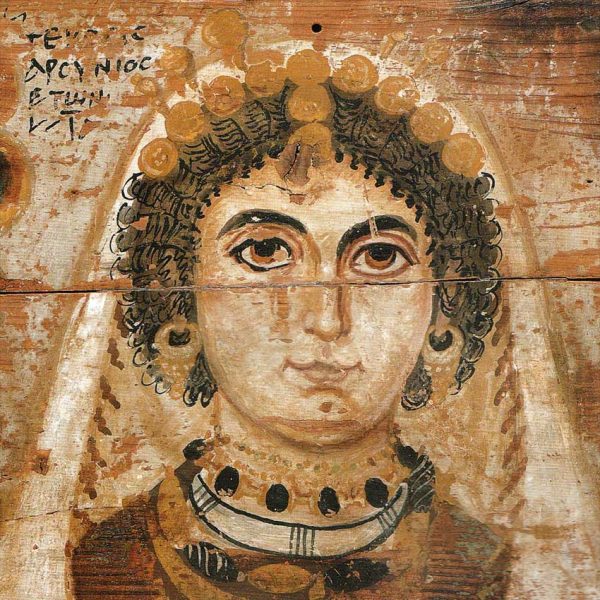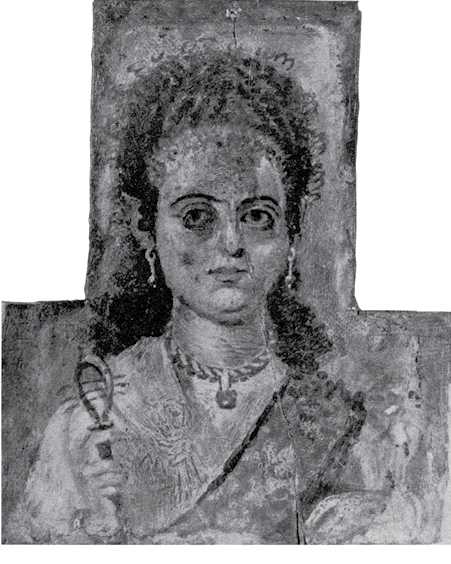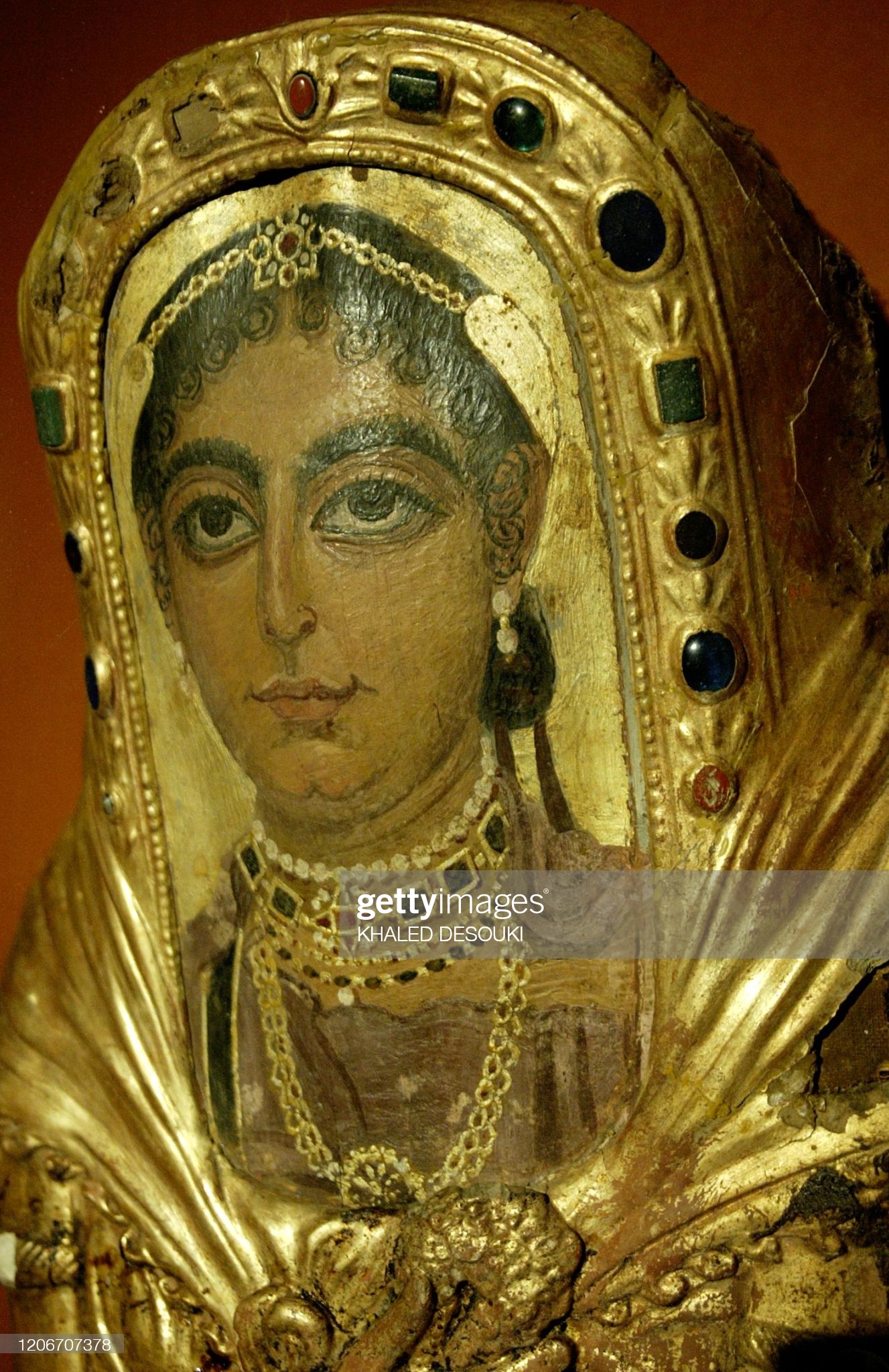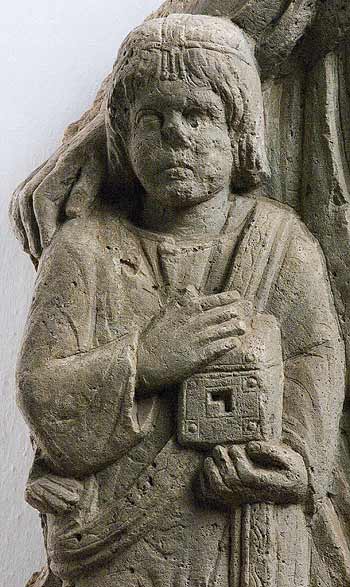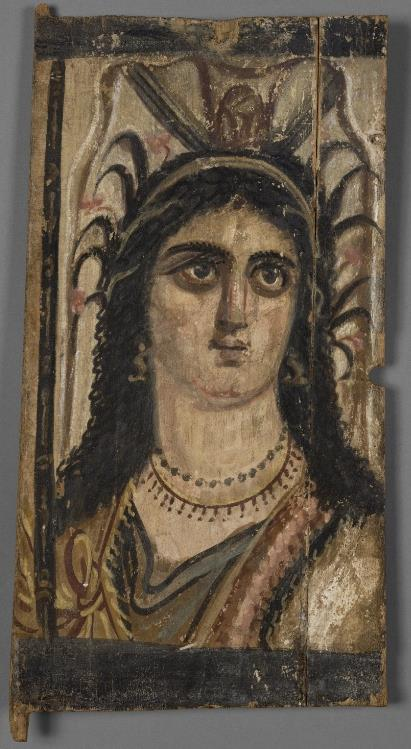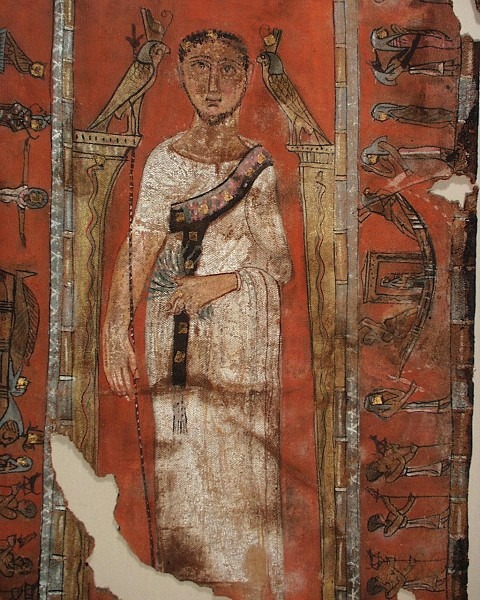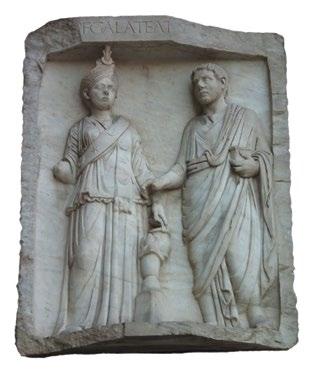
(?), 19.1 x 10.2 cm, 2nd century, Assiout College Museum, Egypt 82.
from https://getd.libs.uga.edu/pdfs/dopp_jordan_a_201805_ma.pdf
Isis-Priesterin (?), College Museum, Assiout, Inv. 82, 19,1 x 10,2 cm.
Bilder von Göttern und Menschen der römischen Kaiserzeit – eine kunsttechnische Betrachtung Cristina Thieme, Anna Rommel-Mayet und Luise Sand.
In: Inkarnat und Signifikanz Das menschliche Abbild in der Tafelmalerei von 200 bis 1250 im Mittelmeerraum academia.edu
2.4.1 Isis-Priesterin (?) „Assiout 82“, Datierung unbekannt
“The fragment shows a woman with a slightly sloping upper body, her face and gaze turned towards the viewer (fig. 14). The black hair is parted in the middle and falls in heavy curls to the shoulders. She wears a silver-colored tiara, which is crowned by the gold-colored sun disk flanked by cow horns. She wears a white chiton, over her left shoulder is a garland of reddish flowers, around which a dark snake winds.
The face with the long nose, the small mouth and the large eyes is easily idealized. The adaptation of the portrait of an Isis priestess to the appearance of her goddess is conceivable. The depicted turns towards the viewer and does not look into the distance like the god figures. The face is reproduced close to nature through the very fine, painterly transitions between the shaded and illuminated areas of the skin. The painting lies on a white primer, which is covered with a full-area gray layer. The incarnate is built on an opaque light pink base tone. The deeper shadows on the nose, around the eyes and on the mouth appear naturalistic due to their transparency. Compared to the images of gods, the incarnate appears more opaque. The facial features are not finally contoured. The painting may have been done using the tempera technique. As the edges of the painting show, the panel picture was framed.”


